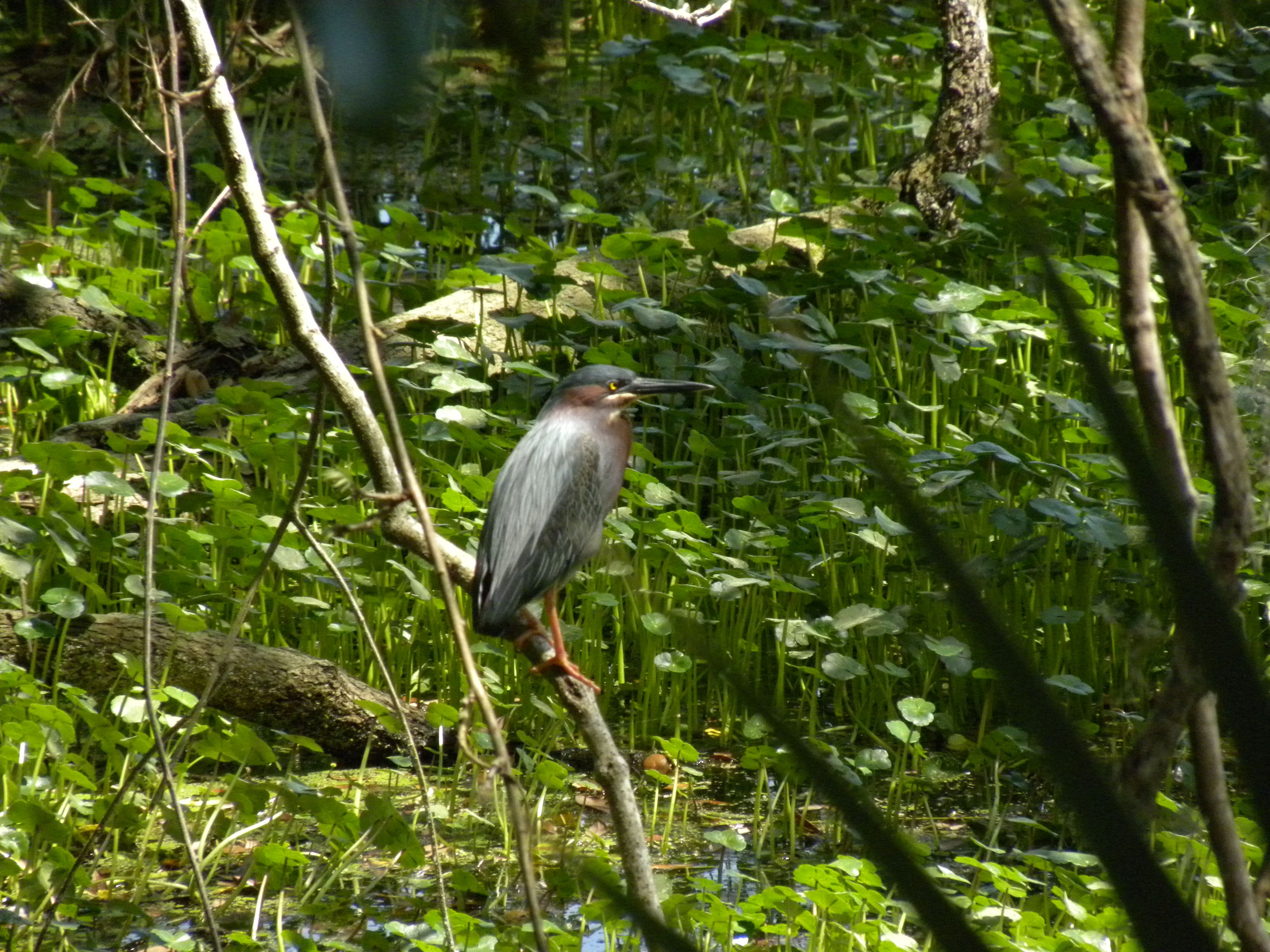August 7, 2012. Many years ago a seasoned birder told me that winter birding is far better than mid-summer birding. I didn’t, and still don’t, believe him, but I understand why he thought that. Where have all the birds gone?
At the end of another hot day I went to see what was happening along one of my favourite woodland trails, – not much as it turns out. This trail is one of three I enjoy, all of which start out on high ground with spectacular long views across quiet farmland, then descend quickly to cut across a flat, densely wooded swamps; swamps which a month ago were ringing to the songs of Wood Thrushes, Veerys, Canada Warblers and Northern Waterthrushes. But not tonight; in fact very few songbirds tonight. Where have they all gone?
So this woodland walk was something of a letdown although I did find a family of Wood Duck on a small pond, was buzzed by a female Ruby–throated Hummingbird and challenged noisily by an Eastern Kingbird. I love kingbirds’ pugilistic attitude, their chittering in-flight challenge sounds like a couple of small pebbles rattling in an empty old tin can, and when delivered from their fluttery, almost stand-still flight it says: “I’m watching you. Approach at your peril.” And chastened by the kingbird I left to see what shorebirds might be visible in the fading evening light on the mudflats of a nearby reservoir.
This second stop was enjoyable perhaps more on account of the late-day cooling, quiet roadside and evening light than the birds, which were a touch too far away for binocular birding. But I was able to note: Osprey, Killdeer, Green-winged Teal, Caspian Tern, Lesser Yellowlegs and, as my Bird of the Day, a Green Heron. The Green Heron first caught my eye as it fluttered to a landing atop a distant tree stump, but it was so far away and so apparently small that I wondered for a while whether I was seeing a Least Bittern. The setting was quite wrong for a Least Bittern for they are reclusive deep-cover marsh birds, but with our sustained drought affecting water levels, bizarre things sometimes happen; and it was the apparent size that had me thinking about a possible exception to the rule. Well I was saved from a sleepless night of torment, wondering ‘was it or wasn’t it’, by the arrival of an amiable fellow birder who quickly slapped his telescope onto the bird and confirmed Green Heron. A lesser ranked sighting than a Least Bittern, but still a good bird well seen and well identified; and it enriched a midsummer evening.
